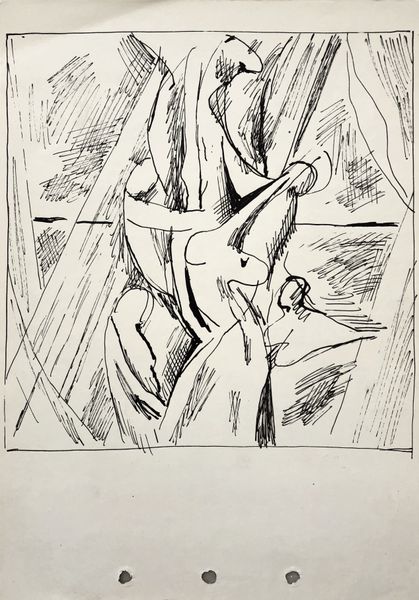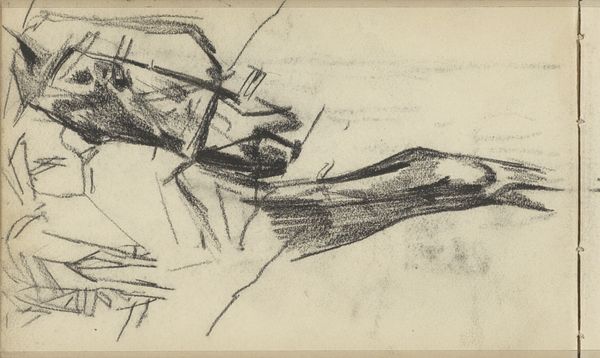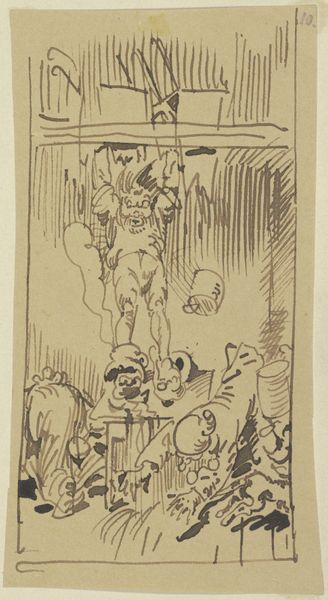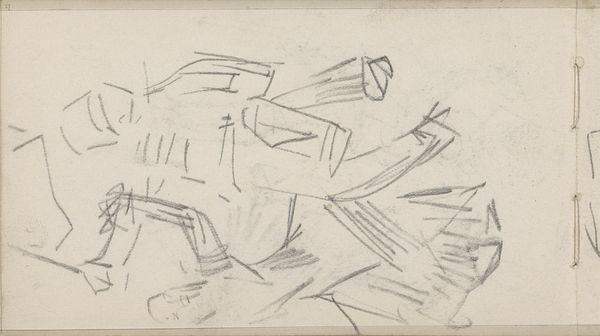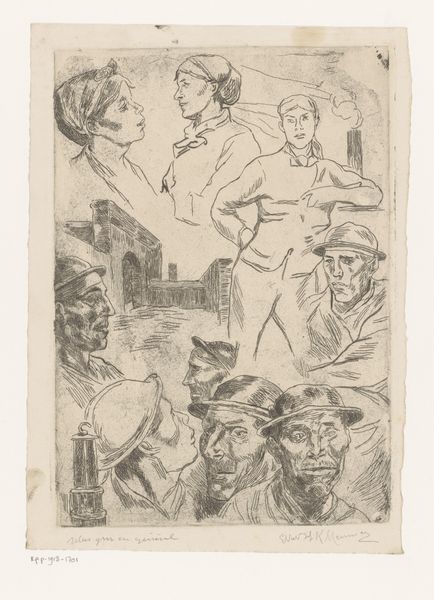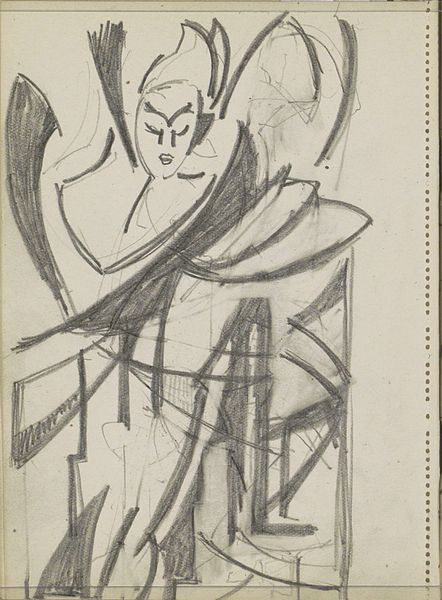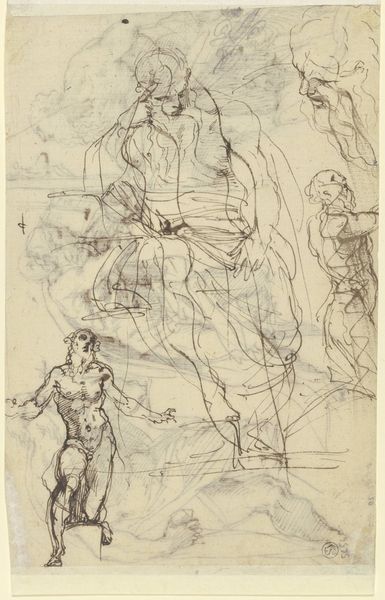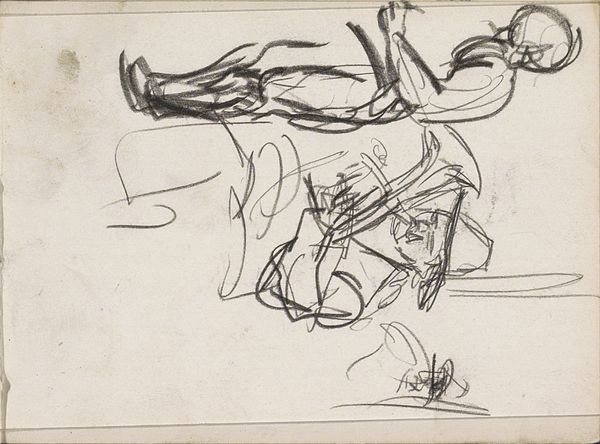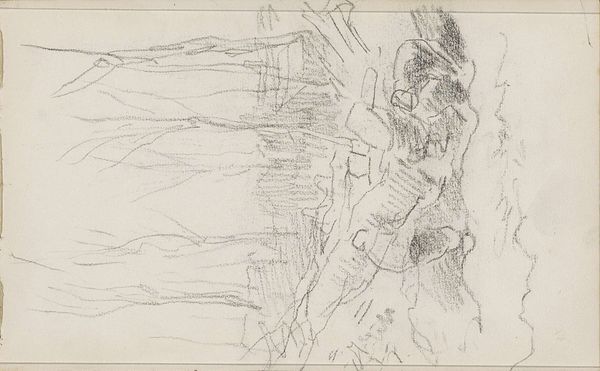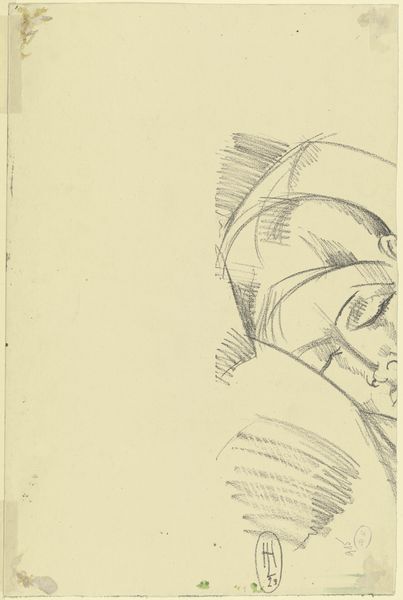
print, etching
#
cubism
# print
#
etching
#
figuration
#
geometric
#
line
Dimensions: plate: 26.7 x 21 cm (10 1/2 x 8 1/4 in.) sheet: 34.3 x 26.4 cm (13 1/2 x 10 3/8 in.)
Copyright: National Gallery of Art: CC0 1.0
Editor: This is "Runner," an etching by Stanley William Hayter from 1939. It’s so dynamic, a jumble of lines that somehow capture the essence of movement. I’m intrigued – what’s your take on this, what do you see? Curator: It reminds me of trying to capture lightning in a bottle, you know? Hayter isn't just depicting a runner; he's dissecting the *idea* of running, breaking it down into its frantic, almost frantic energy. The Cubist influence is evident in the fractured forms and multiple perspectives… It is from 1939, so consider what’s rumbling in Europe… the urgency, the escape. Do you get a sense of that tension? Editor: I do, actually. The sharp lines contribute to that feeling, almost like shards of glass. And is that related to automatism somehow, letting the subconscious take the lead? Curator: Exactly! The seemingly chaotic lines? They might be Hayter wrestling with the anxieties of the time. A visual metaphor for a world on the brink. Now, do you feel the subject running toward or away? Is there anything about his anatomy that hints toward our interpretation? Editor: I'd say both! There’s a forward momentum but also a frantic quality, which, combined with all this history, reads almost like an escape. All the sharp points are stressing the fear aspect. It all gives more layers than just an image of a runner in an etching! Curator: Precisely! And that’s the magic, isn’t it? How much can be captured, even implied. An artwork speaks not just of its subject but of the atmosphere surrounding its creation, too. This gives me a different way to look into these frantic lines. Thanks for offering me to shift my usual thoughts a bit.
Comments
No comments
Be the first to comment and join the conversation on the ultimate creative platform.
